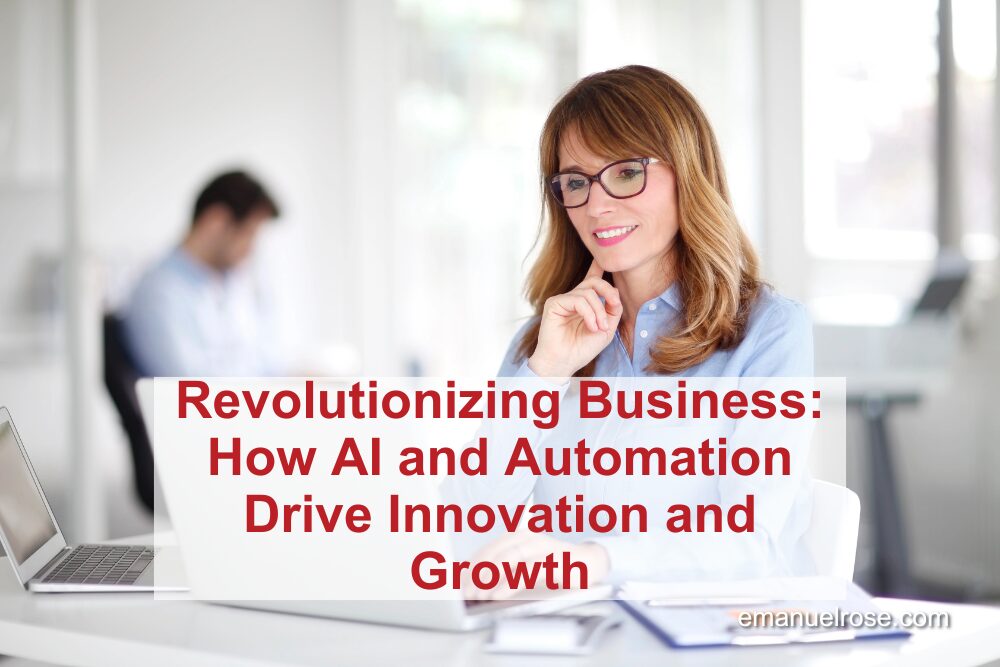Adaptation is not just a strategy; it is a necessity. Businesses must stay ahead by leveraging the latest technological advancements to survive and thrive. As we delve into the age of artificial intelligence (AI), integrating AI and automation tools into marketing strategies emerges as a critical path to revitalizing growth and ensuring sustainability.
Understanding AI’s Role in Modern Business
The emergence of AI-driven tools has sparked a wave of enthusiasm and skepticism. As businesses navigate this new technological terrain, it’s crucial to understand their potential and limitations. AI models like chatbots and ChatGPT are reshaping how businesses interact with data, generate content, and engage with audiences. These AI tools’ value lies in their ability to automate mundane tasks, enhance creativity, and catalyze innovative thinking.
Harnessing the Power of AI for Creative Solutions
One exciting application of AI is its potential to enhance creative processes. Whether generating images for social media posts or brainstorming new ideas, AI acts as an innovative partner, providing unique perspectives that might not be immediately apparent to human thinkers. By simulating different scenarios or generating unconventional concepts, AI can inspire new lines of thought and help overcome creative blocks.
Consider the scenario where AI generates an image to accompany a social media post about common sense—it might depict something unexpected, like individuals wearing shoes on their heads, to provoke discussion and engagement. This ability to think outside the box can lead marketers and content creators to new and exciting directions previously unexplored.
Navigating the Art of Prompt Engineering
A fundamental aspect of effectively utilizing AI tools is prompt engineering, a modern twist on the traditional role of question formulation in AI systems. Crafting effective prompts requires a balance of precision and creativity. While not an exact science, the process often involves starting with simple prompts and iteratively refining them to achieve desired outcomes. This iterative process mirrors software engineering practices, emphasizing the importance of computational thinking—a structured approach to problem-solving that is invaluable in AI interactions.

The Strategic Use of AI in Business Operations
AI-driven automation offers businesses an opportunity to reimagine traditional operations. For instance, AI can handle routine communication tasks, such as reaching out to customers or managing payments, freeing up human employees to focus on more strategic initiatives. Implementing AI for specific applications, like AI voice callers for customer reminders, showcases how businesses can effectively integrate AI for tangible benefits.
Creating AI-driven platforms that transcribe, summarize, and analyze meetings illustrates the transformative potential of these technologies. By automating processes traditionally requiring human intervention, businesses can increase efficiency and productivity, allowing employees to dedicate more time to creative and strategic tasks.
Looking Ahead: The Future of AI and Automation
As we move forward, the question of completely automating certain business functions remains complex. While AI is making strides in areas like meeting assistance—transcribing discussions and generating summaries—it’s clear that the human touch is still required for validation and oversight. Ensuring accuracy and relevance in AI outputs is crucial to their effectiveness in real-world applications.
The industry continues to explore the integration of natural language input/output systems, aiming to simplify the interaction between AI tools and users, especially those without technical backgrounds. As businesses and developers refine these AI capabilities, the potential for impactful, user-friendly AI solutions expands.


Cultivating an AI-Driven Mindset
To make the most of AI tools, business leaders must adopt a mindset of continuous learning and experimentation. Just as early adopters of past technological advances positioned themselves for success, those actively engaging with AI tools today will be better prepared to navigate future business challenges. Encouraging a culture of openness to AI’s evolving capabilities enables businesses to reconfigure operations, offer enriched customer experiences, and ultimately drive growth.
Strategic exploration of AI’s potential and commitment to integrating its capabilities into business models will be key. In this digital transformation era, embracing AI and automation is not just an option—it’s a strategic imperative for survival and success. Businesses can unlock unprecedented opportunities for innovation and market leadership by fostering creative collaborations between humans and machines.
We appreciate Vinay K. Chaudhri’s insights on AI and automation. Embracing these tools is key to unlocking creativity, streamlining operations, and driving business growth.
Get to know Vinay K. Chaudhri: linkedin.com/in/vinay-k-chaudhri
Watch the Marketing in the Age of AI Podcast Featuring Vinay Chaudhri: youtu.be/apgKAHuJb0s

